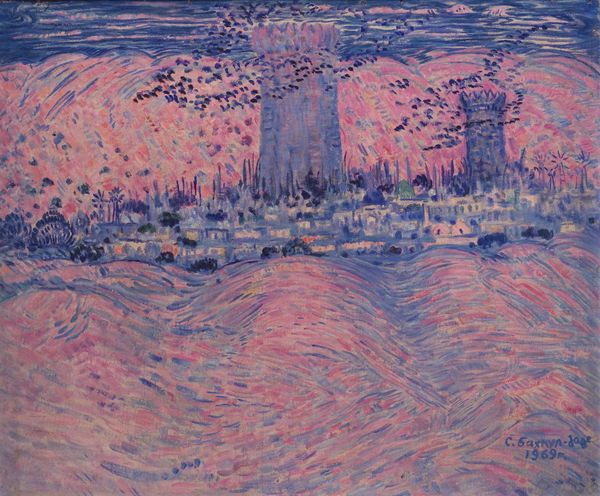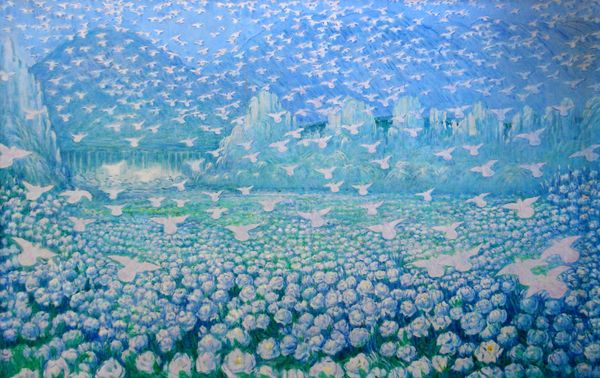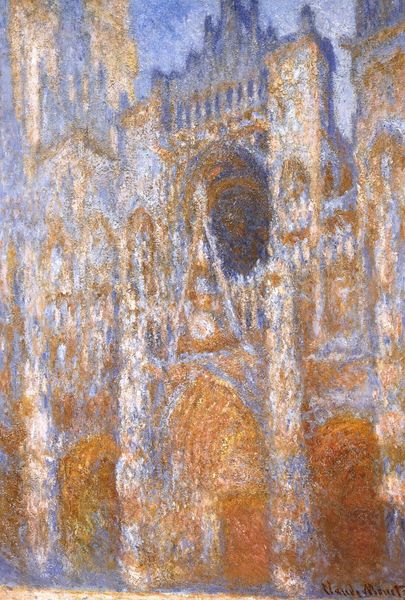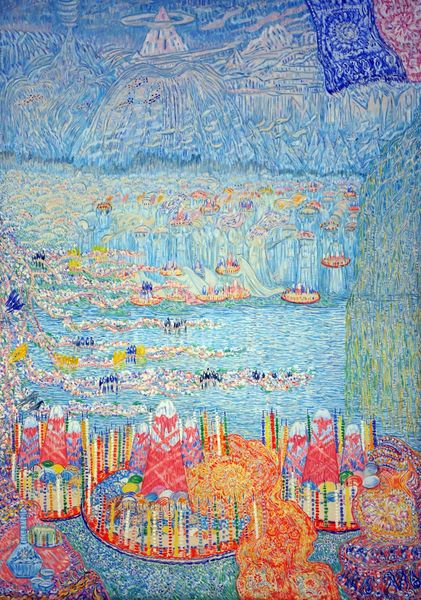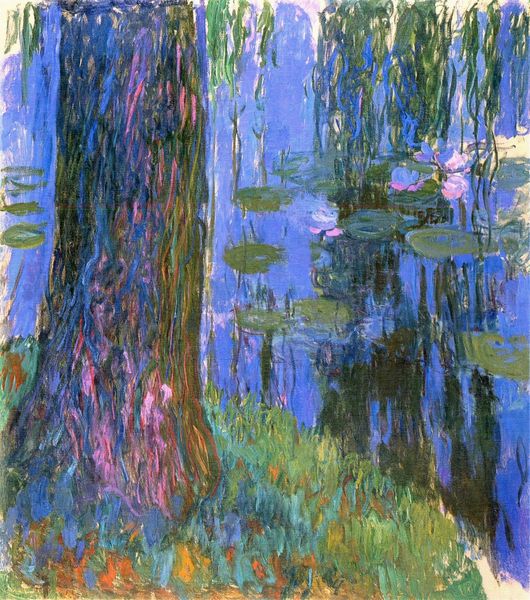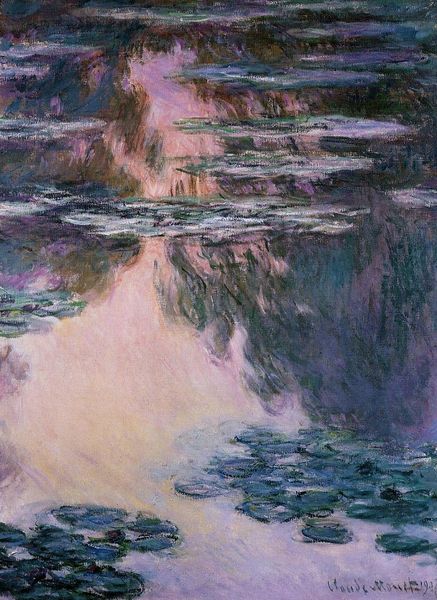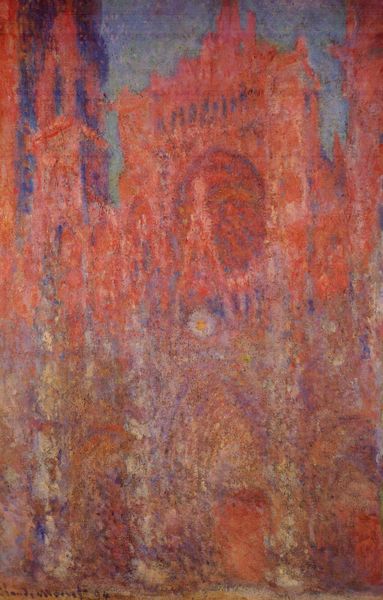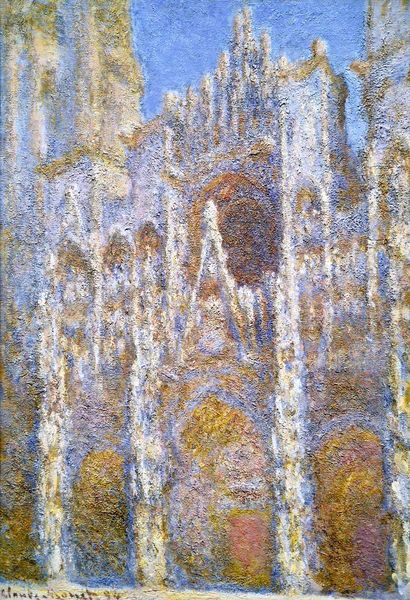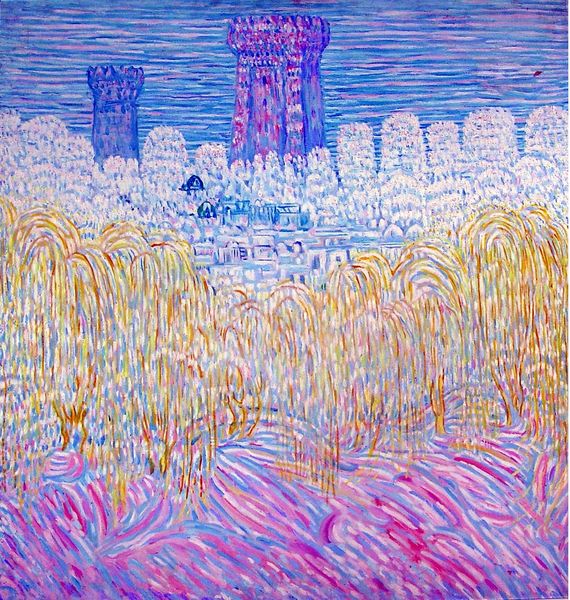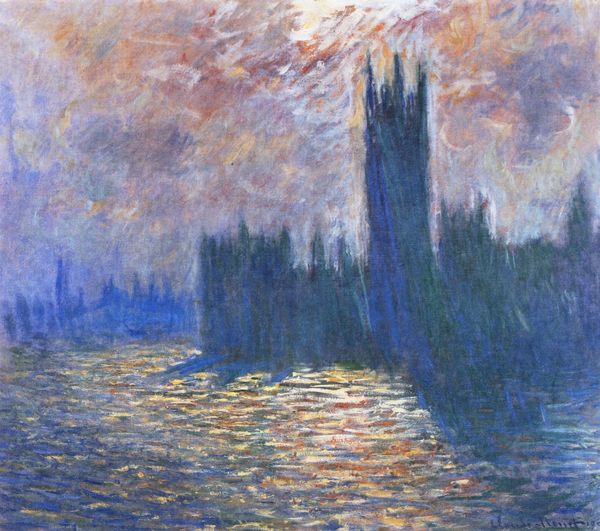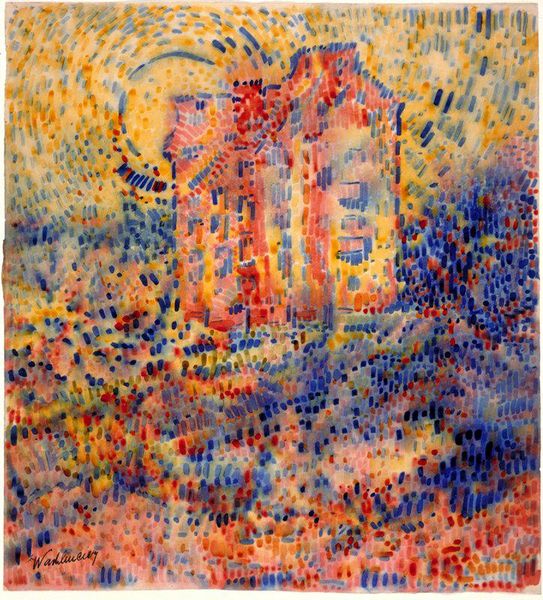
Dimensions: 200 x 180 cm
Copyright: Sattar Bahlulzade,Fair Use
Curator: Sattar Bahlulzade’s “Ancient Fires of Surakhani,” created in 1971. An intriguing example of expressionistic landscape painting. What are your initial impressions? Editor: It’s incredibly energetic. The density of line and the pulsing red against the cool blues give it a frenetic, almost vibrating quality. Acrylic paint, yes? One can practically feel the physical act of its making through the swirls and strokes. Curator: Bahlulzade was working in a socio-political climate that demanded a certain adherence to socialist realism, yet he found ways to push boundaries. Note how the traditional architectural elements are deconstructed. It is a fascinating approach that allowed artists of his time to both address and subvert state mandates for "folk art". Editor: I find it captivating how the supposed landscape bleeds into pure abstraction. It reminds us that landscape painting isn't only about visual representation but about interacting with material, craft and also the socio-geographic factors. He presents the site's spirit rather than its strict appearance, creating a dialogue between the ancient sacred space and his contemporary world. The surface feels actively labored, a kind of built environment on the canvas itself. Curator: Surakhani has deep historical significance. An important monument of Baku. It was a Zoroastrian fire temple, a place of profound spiritual resonance for centuries, even before Islam. Bahlulzade isn’t merely depicting the site but evoking its energy and historical weight. The red evokes the perpetual flame of this sacred place. His art mediates between the tangible heritage of Baku and the symbolic power of Azerbaijan's past. Editor: And consider the context of acrylic paint itself. Its affordability and flexibility opened avenues for artists, democratizing the creative process. This choice allowed Bahlulzade to quickly and effectively capture this "spirit," breaking down traditional methods linked to wealth and artistic hierarchy. It suggests the democratized image of "folk art" accessible to all. Curator: Absolutely. He embraced the tools available and reshaped traditional subjects. What resonates with me is the visual assertion that even within a controlled ideological landscape, artists found methods to articulate their singular creative expression and preserve cultural memory. Editor: And for me, the compelling question lingers about materiality – its ability to bypass, to transcend imposed aesthetic conventions and offer profound new dialogues. Curator: Well said. A painting that offers much to ponder. Editor: Indeed. A captivating collision of land, labour and legacy.
Comments
No comments
Be the first to comment and join the conversation on the ultimate creative platform.
